


Contact

Home


Reported Capture of a Wild Man.
The Singleton Argus and Upper Hunter General Advocate (NSW)
Date: February 19, 1879
Page Number: 2 S
Yowie / Bigfoot
Dr. L. P. Yandell, Jr., a professor of Clinical Medicine and Dermatology at the University of Louisville, published an extensive medical
diagnosis of the Wild Man. Yandell began by summarizing the exhibitor’s narrative of the Wild Man or Man-Fish, and then dismissing
it: “A short time since the Tennessee and Kentucky newspapers contained a startling account of a wild man lately captured, with great
difficulty, in the Cumberland Mountains.... It is scarcely necessary to say that much of this story was only showman's talk, uttered
to attract the attention of the curious and credulous public.” Invited to view “the monster,” Yandell made him an object of his expertise,
writing, “before seeing the case I had diagnosed it as one of ichthyosis, and a single glance was sufficient to verify the correctness
of my conjecture.” Yandell carefully categorized the various varieties of ichthyosis, now understood to be a largely genetic skin
disorder, that the man suffered from, describing much of his body as the “shed skin of a boa-constrictor,” while other parts resembled
“the skin of a lizard or alligator about their limbs and belly” and the “skin of the buffalo-perch.”
Anderson, E. D. (2010) Feral
Bodies, Feral Nature: Wild Men in America. Pg 120.
The Argus (Melbourne, Vic.)
Date: February 28, 1879
Page Number: 7
For some days past (says the Geelong Advertiser of the 27th inst.) a naked man has been running wild in the bush forming a portion
of the Golf-hill estate, near Shelford. On Tuesday afternoon Mounted constable Davidson went in search of the man, and towards the
evening found him standing under a tree a short distance from the River Leigh. The individual turned out to be a young man named Thomas
Cleary, who states that he has recently been sheep-shearing at Buninyong. Cleary was perfectly nude and when arrested on a charge
of lunacy, he appeared to have just come from having a bath in the river. This wild man of the woods was brought to Geelong yesterday,
and remanded until Monday for medical enquiry.
A WILD man has lately been captured in the mountains of Tennessee, and is at present at Louisville undergoing a process of training,
which, it is hoped, will sufficiently tame him for exhibition. The Pall Mall Gazette, without apparent distrust, quotes a description
of the creature from the Courier Journal. His whole body is covered with a layer of scales, which drop off at regular periods, in
the spring and autumn, like the skin of a rattlesnake. His eyes present a frightful appearance, being at least twice as large as the
average-sized eye. Some of his toes are formed together, which give his feet an ungainly appearance ; and his height, when standing
perfectly upright, is about 6 feet 5 inches. 'An impression is said to prevail that he was originally a bankrupt shoemaker, who being
crossed in love took to the woods. Now, this explanation strikes me as being utterly insufficient. An oyster may be crossed in love,
and so I presume may a shoemaker. But neither the circumstance of a man being a shoemaker, nor of his being crossed in love, nor of
both combined, appear sufficient to account for his shooting up to a height of six foot live, for his developing annually renewed
scales, doubling the size of his eyes, or for his toes growing together. I had always regarded the effects of love as taking the form
of playing the flute and writing verses. If this is the commencement of a new era, and no shoemaker will in future he able to sustain
a jilting without making preposterous eyes, studding scales on his own skin, developing a club-foot for the benefit of rivals, and
acquiring prodigious stature, I should be sorry to be either such an individual or the rival of such.'
The Maitland Mercury & Hunter River General Advertiser (NSW)
Date: June 26, 1879
Page Number: 2
According to Darwin, Tindall, and other scientists, our illustrious thirty-first cousin of baboon notoriety, better known as the "Wild Man of the Woods," is now in our midst. He is being shown at Greta. Lots go to see him ; but relation or no, he is regarded by the visitors with feelings more akin to curiosity than to blood relationship. Can this be another of the many instances of "man's inhumanity to man ;" or is it because he is unable to explain the direct line, that we refuse to "rub noses" with him ?
SEEKING FURTHER
INFORMATION
CEYLON AND THE CINGALESE.
The Sydney Morning Herald (NSW)
Date: October 11, 1879
Page Number: 7
...
Of the races of man in Ceylon, first place was by nature given there, and should be here, to the Veddahs. They are the real originals--the
aboriginals, and oldest inhabitants of the island. The Veddah is a sort of primeval man, a veritable wild man of the woods. He lives
in caves, and shoots at birds and monkeys with a bow, which he draws with his toes. If there be a missing Darwinian link between the
gorilla and man, the Veddah of Ceylon must be the nearest to it yet found.
...
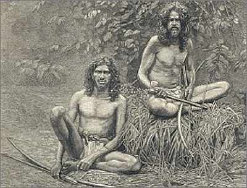
Vedda people.

Australian Town and Country Journal (NSW)
Date: October 25, 1879
Page Number: 17
A Glen Innes correspondent says :--Unquestionably the present season is a most remarkable one. For the past six months we have experienced intervals of wet. In point of fact, for the most of that term rainy weather has prevailed. Pioneer residents here-- those who knew Glen Innes when the "wild man" held unbounded sway, and when but a solitary squattage marked the only semblance of civilisation --tell us the past six months has no parallel in their recolloction. However, things look a trifle more settled now, and the severe frost of a few nights ago is perhaps a good indication for future fine weather. Nature has donned her mantle of poetic grandeur ; stock are well-conditioned and healthy.
Gippsland Times (Vic.)
Date: May 5, 1880
Page Number: 3
Additional particulars have been received of the existence of a strange animal at large on Yorke's Peninsula. The report, received a few months ago, represented the animal as being like a large hairy man. The latest account is as to the frightening of settlers' horses during the night. Tracks as of an enormous kangaroo were discovered in the morning, jumping 4 feet 6 inches. The aboriginals speak of a big one fellow like man along the scrub. The first report was discredited, but the latest furnishes reason for thinking that some unknown animal is in the scrub. The settlers are talking of organising a party to search the scrub. The matter has caused much excitement on the Peninsula.
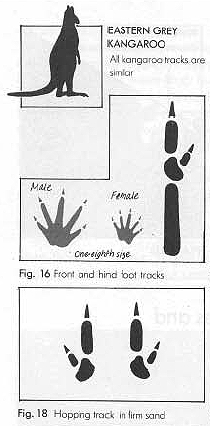
Hairy man:
SOUTH AUSTRALIA
Clarence and Richmond Examiner and New England Advertiser
(Grafton, NSW)
Date: May 5, 1880
Page Number: 3
From the far north comes a story of a wild man of the woods of an indescribable appearance. Yet some sceptics dispute the fact of its being anything more than a gigantic kangaroo. Some such creature is reported to have been seen not far from Nymboida, in this district, and about which there are some astounding tales, many of them of the Munchausen character. To solve the mystery, especially as times are slack, might not some of our sporting men make up a party to scour the country in that direction. If they did not succeed in discovering the "hairy man," they might find something much more valuable. The locality where this strange creature is said to frequent will be none the worse for careful exploration for more reasons than one.
Hairy man:
NORTHERN NSW
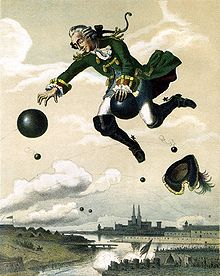

Munchausen rides on a cannon ball.
GININDERRA.
Queanbeyan Age (NSW)
Date: April 7, 1880
Page Number: 2
...
The speeches delivered were of a more sedate kind than is generally heard at tea meetings, the speakers confining themselves to matters intimately connected with the Wesleyan Church. The attention of the hearers was frequently diverted from the business of the evening, by the jabbering and antics of one of those (unfortunately becoming too common) Australian gorillas, which remained outside the building endeavouring to create amunsement or annoyance by its senseless tricks. The meeting which terminated with the usual formalities, was brought to a close shortly after nine o'clock, thus affording those who resided at a distance time to reach home before the small hours of the morning.
...
The mention of "one of those Australian gorillas" in the article on the left appears tongue-in-cheek. But what was it referring to? A noisy koala? A drunk?
THE HERMIT OF MOUNT COLE.
Bendigo Advertiser (Vic.)
Date: July 28, 1880
Page Number: 3
The Ballarat Courier writes :—A gentleman who was in Ballarat on Saturday informs us that he visited the home of the "wild man" of Mount Cole duriug the week. He found the hermit, as the wild man is called, living in a small cave in Mount Cole, about four miles from Buangor. The cave is very small, and is said to have been formed wholly by the hermit, who with a knife cut out the soft sandstone until he had a hollow large enough to swing a cat in, providing the cat was not particular about a bump or two. The hermit, he says, is a well-built young follow, intelligent, and devoted to his present life, because he likes it. He was at home when the visitor called, and treated him very courteously. In reply to questions, he said that he had been there some months, that he liked it better than living in a hotel in Carlton—a mode of life he expressed himself as dissatisfied with—and that he has some money on deposit in a bank in Melbourne. He gave his visitor his name, and said he had but one relation in the colonies, a brother, who lived at Sandhurst. Our informant noticed that the only provisions in the cave were some flour, tea, and sugar, and the hermit, showing a gun, said he some times shot a kangaroo or opossum, and then had meat at his meals. There was plenty of fuel andl water adjacent to the cave, and the ascetic generally seemed well supplied with the necessaries of life. He conversed very rationality and intelligently with our informant, and disclaimed any desire to return to town life. The "wild man of Mount Cole" is allowed to live in peace at his den, but we understand, that as it is feared his solitary life may affect his reason, the police intend making inquiries of the where-abouts of his brother, with a view of getting him if possible to influence the hermit, and persuade him to return to the society of his fellow-men.
AN EXTRAORDINARY MONSTER
The Darling Downs Gazette and General Advertiser (Toowoomba, Qld)
Date: July 16, 1880
Page Number: 3
According to a report furnished to Sub-Inspector Creaghe (says the Grafton Argus) by Constable Morgan, of Blick's River, a most extraordinary creature is inexistence in the bush on the Serpentine River, near the Grafton and Armidale road. Mr. W. Mowles states that on six different occasions he has seen a creature, which he describes as follows :— It is about 3 feet 6 inches in height, with a head like a diamond snake, hands like a kangaroo, and body like a man, and is very dark and hairy. Other portions of the creature, which cannot be delicately described, also resemble a human being and pig. The last time Mr. Mowles saw this animal he threw a stick at it, when it turned and chased him. Mr. F. Hays has also seen this queer specimen of natural history, and on one occasion was about to shoot it when it leaped into a waterhole. A Mr. B. Britten also expresses the opinion from what he has heard that such a creature really exists! Constable Morgan has been instructed to make further inquiry into the matter.
Hairy man:
NORTHERN NSW
Clarence and Richmond Examiner and New England Advertiser (Grafton, NSW)
Date: July 17, 1880
Page Number: 5
This is a strange report by constable Morgan of the sort of nondescript animal alleged to have been seen in the neighbourhood of the Serpentine River. The account given of the animal "debbil debbil," "yahoo," or whatever it may be, goes far to show that if it approaches anything like what is said of it, it is entirely unknown to naturalists. What is it? Have we no enthusiasts, either naturalists or lovers of marvellous adventure, who will make up a party to hunt down this wonderful creature?—if it exists anywhere but in the imagination. Why, a live specimen would be a certain fortune, especially if he could only be taught to whistle. Artemus Ward's show would be nothing in comparison to it. "The wonderful debbil-debbil, part snake, part kangaroo, part pig, and part man from that unknown land the Clarence district," just in time, too, for the Melbourne Exhibition. What a splendid advertisement for the district it would be. Who would not, among the savants of the world about to assemble at Melbourne, desire to visit a locality where such wonderful combinations are produced. What say you? Shall we go and catch the beast? There is money in him if we can only got him just as he has been described.
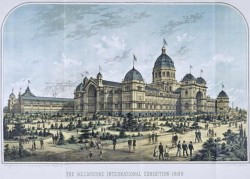
Melbourne Expo 1880

Contents
(CONTRIBUTED.)
THERE are a great many persons disposed to laugh at the reports which have been circulated as to the appearance of a creature not hitherto described between the watershed of the Clarence and Macleay. Not knowing personally any the parties who have spoken of having seen it, I cannot offer any opinion of the value of their testimony ; but may say, in passing, that others who do know them are perfectly satisfied with their credibility. It of course does seem strange, if any such animal exists in our ranges or mountain scrubs, that more has not been seen or heard of it by diggers and timber-getters, the former of whom are noted for exploring, in their quest of the precious minerals, all sorts of inaccessible places. Still, I doubt not, there are many objects of natural history existing in out-of-the- way localities which have escaped the notice of such observers, and may yet be known to naturalists. Attaching credence to the circumstantial descriptions of this animal (which, by the way, have not yet been fully published), I am inclined to believe it is some lusus naturae, or freak of nature. There are many who have travelled about a good deal, and still have, not seen such things as white kangaroos, white dingos, or black opossums--not to mention such monstrosities as snakes with two heads, bullocks with six legs, horses without hair, &c., &c. Allowing for a slight discrepancy in the description--and the variation, after, all, not being such a very great departure from a wallaroo--we might not have to go any further for the solution. There remains, however, another theory--that it is a perfectly new animal. There is nothing inconsistent even in this, or the possibility of a few solitary specimens of some almost extinct race of animals being yet to be found in the dense brushes of our mountain ranges. It is now a pretty well accepted fact that, at the time of Cook's first visit to the New Zealand coast, specimens of the Moa were still to be found on the island, and it has been thought not beyond the bounds of probability that a living specimen might yet be discovered. True, no fossils have been found in our land corresponding with the creature lately seen ; but many fossils have been unearthed, telling of animals once existing on our shores, of which there is not the vestige of tradition even to be learnt from the aboriginal inhabitants of the soil. It is somewhat remarkable that the story now in circulation corroborates very closely what the blacks, many years ago, used to declare existed in the ranges between Rocky River (Timbarra) and the Clarence. If I was perfectly sure the modern yarn was not founded on what the blacks used to tell, I would take the one to be strongly corroborative of the other. This animal they called "Jerrawerra," and described it as a biped, about the size of a small black gin, walking erect, and using its hands and arms as a human being. It was very rarely seen, and they did not care about going near its haunts. The latter statement may be very readily accepted. They further describe the "jerrawerra's" as living in caves, and as ready to attack them whenever they saw them. They also described them as slow in their gait, and covered with hair. No value would ever tempt the boldest of them to promise to bring in "a pickaninny one." It would not appear that many of the blacks had seen these animals, but every man, woman, and child none the less somemnly believed in them ; and it was very amusing to cast a doubt upon their existence, from the fact of their not being able to produce a specimen, as they could of kangaroos or other animals. They would invariably ask me to go to such and such a place and see for myself, and I would then believe.
About 10 years ago I had a visit from Mr. _____, a squatter upon New England, a man who has been all his life in the bush, and who if I were to mention his name, it would serve as a guarentee anywhere for the authenticity of his assertions. It may be inferred he had seen and know all animals of common occurrence throughout his district, and I may add, he was not of a temperament or of habits likely to conjecture imaginary beings from an overheated brain. We had been talking of blacks, and their statements in regard to various matters, and I asked him if he had heard about the "jerrawerras." He replied, "Oh; yes, often from old ____," naming a blackfellow I knew well. He then added, "I believe I saw one once myself." The fact, as related to me, amounted to this: He was travelling from ____ to his own place ; the sun had set, and night was closing in, but there was sufficient light to observe objects at a considerable distance. His track lay through a pretty, rough unfrequented country, and just about this time he had to descend a hill for about 300 or 400 yards, at the foot of which was a small creek, with tangled scrub round and about it. When about half way down his horse pricked his ears, and exhibited unusual signs of interest in something ahead; this caused him to look particularly in that direction, and he saw what at the moment he took to be a blackfellow, walking among the bushes. Thinking he was stalking some animal, he kept his eyes upon him as he approached. When within about 40 yards it quickly turned round, and, after gazing with astonishment at the man and horse, it rushed into the scrub that lined the creek, and was no more visible. Mr.____ had no doubt in his mind about it being a black until it turned around. lt had occurred to him, in the few yards he was allowed to approach, that it was not big enough for a blackfellow, that it must be one of the gins looking for something they had dropped. He says it was of low stature, not 4 feet high at the outside; it was not a human being, and yet resembled no Australian animal so much as human kind. He added, if it was not a "jerrawerra" he did not know what else to call it, and ever after that evening believed there was something more in the blackfellows' tales other than mere fancy. He never subsequently saw it, although frequently travelling over the same country, and said it would ever be a mystery to him. The blacks at the station, when told of it, immediately pronounced it to be the "jerrawerra." Some years subsequently I was told by a stockman, on one of the outlying stations, that a party of diggers, who had gone to prospect one of the creeks heading near the tableland, cleared out very precipitately. They had got capital prospects, but one night's camping satisfied them, and they struck their tent next morning. It appeared they had a very ferocious dog
with them--nearly a pure-bred bulldog. He was out and scarred all over from fights with native dogs, any number of whom he would tackle, and had, single-handed, killed scores in their travels. This dog, which they had never known to betray signs of fear, had made a charge into the bush, but come back very quickly, showing signs that he had got a fright, and slunk into the tent with abject fear, and no amount of coaxing or bullying would induce him to foresake the friendly shelter of the canvas. He had not as much as a scratch on him. The bipeds saw nothing, and what the quadruped saw he could not tell, but the diggers concluded there must have been something awfully uncanny abroad that night to so affect their dog. They made tracks the next day, as I have said, and never returned, but had no hesitation in telling the plain reason for their clearing out so unceremoniously. I cannot tell how the truth may be, I say the tale as it was said to me. It is just possible there are many other facts which might be got throughout the district in support of the theory of some strange animal to be found as lately described. I have never gone out of my way to ascertain from others what they know, or perhaps, a great deal might have been elicited. I confess I have heard many things which needed to be taken cum grano salis, and have not, therefore, mentioned them. Some one else knowing of facts more positive than I have stated may be led to make them known ; whether in confirmation or refutation we be alike acceptable to me.
OLD HAND.
26.02.2016
26.02.2016


Reports of the Wild/Hairy Man
1879-1880
Chased by a Wild Man.
The Armidale Express and New England General Advertiser (NSW)
Date: January 30, 1880
Page Number: 7

A special dispatch from Pownal, Vt., says:—
"Much excitement prevails among the sportsmen of this vicinity over the story that a wild man was seen on Friday last by two young men while hunting in the mountains South of Williamstown. The young men describe the creature as being about five feet high, resembling a man in form and movement, but covered all over with bright red hair, and having a long straggling beard, and with very wild eyes. When first seen, the creature sprang from behind a rocky cliff, and started for the woods near by, when mistaking it for a bear or other wild animal, one of the men fired, and, it is thought, wounded it, for with fierce cries of pain and rage it turned on its assailants, driving them before it at high speed. They lost their guns and ammunition in their flight, and dared not return for fear of encountering the strange being.
"There is an old story told many years ago of a strange animal, frequently seen along the range of the Green Mountains resembling a man in appearance, but so wild that no one could approach it near enough to tell what it was or where it dealt. From time to time hunting parties in the early days of the town, used to go out in pursuit of it, but of late years no trace of it has been seen, and this story, told by the young men who claim to have seen it, revives again the old story of the wild man of the mountains. There is talk of making up party to go in search of the creature."
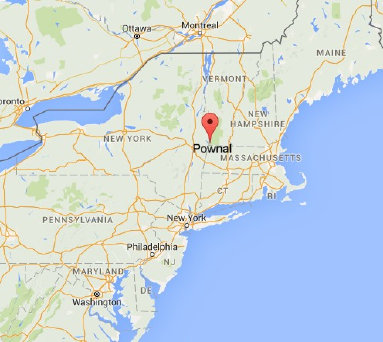
Hairy man:
U.S.A.
28.02.2016
A KANGAROO HUNT IN RIVERINA
The Hay Standard and Advertiser for Balranald, Wentworth, Maude...(Hay, NSW)
Date: March 31, 1880
Page Number: 5
...
About three in the morning the sleepers were roused from their slumbers by demoniacal yells, which sounded as if pandemonium had been let loose. The timid ones quaked with fear, while o'er others the perspiration broke out cold and clammy. Various were our opinions regarding the cause of the yells which had so ruthlessly broken our sweet slumbers, but we were in formed by our host it was a yahoo attracted by the light of our fire. Our friend Podophyllin with unexampled courage started up and seized the only weapons available, namely, his boots, and they were formidable, and confronted the enemy, which, when it saw the bold front presented by our friend, ignominiously retreated with a terrific snort, followed by the boots. The timid ones now unoovered their heads and breathed with freedom. We received no further visits from the enemy, but we heard occasionally his dreadful howls of rage. This prevented us from sleeping during the rest of the night...

28.02.2016
MYTH OR MONSTER.
Clarence and Richmond Examiner and New England Advertiser (NSW)
Date: July 31, 1880
Page Number: 3
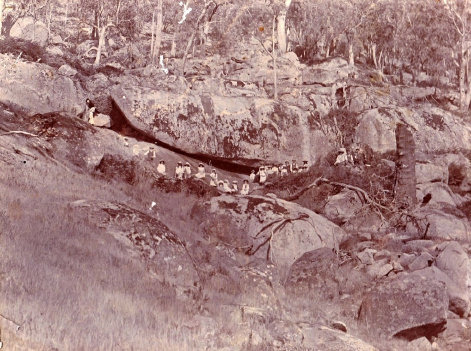
Hairy man:
CENTRAL
VICTORIA
The Wild Man of Tallarook
Sketches of the Southern Border
Australian Town and Country Journal (Sydney, NSW)
Date: May 22, 1880
Page Number: 27
IT is not difficult to comprehend how ghostly legends may become attached to ancient domiciles and lonely or forsaken tenements, where, perhaps, if stone walls and wooden beams could speak, many a strango and mysterious secret might be told of the lives and secret doings of former occupants. But it is somewhat curious how tales of the supernatural come to be connected with lonesome gullies and camping places in the far bush, distant from busy life and possessing few or none of the properties likely to attract an intelligent ghost.
From the door of his house the isolated settler may hear uncouth and mysterious sounds arise from the reedy coverts of an adjacent swamp; the prolonged and mournful howl of the wild dog breaks on the still night air, and from the skirts of the shadowy forest, the boding cry of the curlew falls startling on his ear. Impressed by these nocturnal sounds, and by the weird scenery of the night, the lonely man peoples forest and swamp with fanciful beings of his own creation, or borrowed from the fears and traditions of the timid blacks, and, in his imagination, the mysterious unsceen yahoo and bunyip have their haunts in the darkest recesses of gully and swamp.
...
28.02.2016

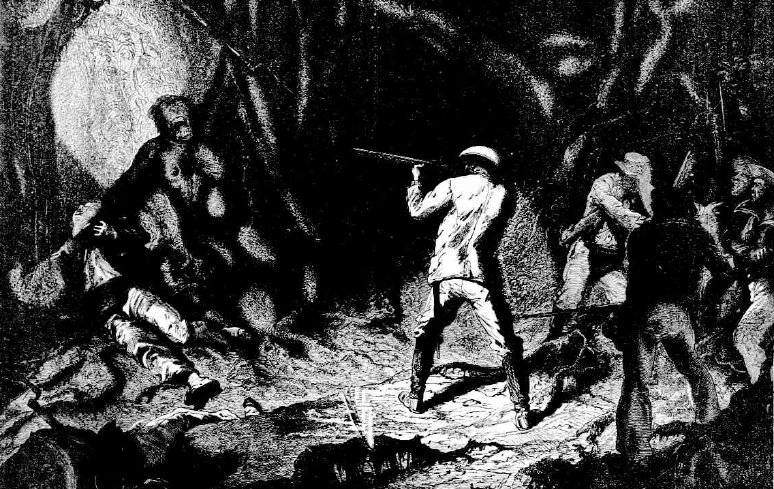
Gorilla Hunting in Sierra Leone, West Africa.
Australian Town and Country Journal (Sydney, NSW)
Date: June 26, 1880
Page Number: 25

The Express and Telegraph (Adelaide, SA)
Date: 20 February, 1880
Page Number: 2
A strange story comes to us from Yorke's Peninsula. Our Minlaton correspondent, writing on February 17, says : "A singular-looking object was seen yesterday, at 6.40 p.m., by Mr. M. O'Dea, a well-known resident here. He says that, as he was driving from Stansbury, and when about 1½ mile from Minlaton, the horses gave a sudden start, and on looking up he saw a strange-looking object on the road about 2½- chains in front of him. In appearance in was formed like a man, stood from 7 to 7½ feet in height, and was covered with feathers of a very light colour. It went along the centre of the road for about 200 yards at a great pace, taking enormous strides. Mr. O'Dea put his horses into a gallop, but it still increased its distance until coming to a bush fence, when it put out one of its arms, which was like that of a human being only very much larger, and made a loud noise, which he could only describe as being between the bellowing of a cow and the peculiar noise made by an emu when calling its young. It easily cleared the fence, and was soon lost to view in the thick scrub. When it turned off the road the outline of its face was to all appearance like that of a monkey's."
Hairy man:
South Australia

19.02.2017
The South Australian Advertiser (Adelaide, SA)
Date: 19 July, 1880
Page Number: 5

...
It is a fact also that when Ned Kelly, returning from the bush for the purpose of fighting it out, made his appearance in the gray morning, the police, who saw him in his rough and queer-looking armor for the first time, took a regular scare, and one of them crying out that it was the devil, and another that it was the bunyip, scattered with the greatest precipitation and hid behind the trees...

A Cold Bath.
Northern Argus (Clare, SA)
Date: 28 September, 1880
Page Number: 2
The other day a gentleman who resides in the vicinity of Clare had imbibed rather freely, and on his way home in the evening he deviated from the direct road and walked into the Hutt River. Fortunately there was not a large flow of water, and as he was unable to walk erect he endeavored to ford the river on his hands and feet. A person at some distance heard an unearthly sound in the neighborhood of the river, and proceeded to the spot; to as certain the cause. He was, however, startled on seeing a bulky unshapely object crawling in the bed of the stream, groaning and hissing alternately, and he concluded that it was a veritable bunyip. While searching for a stone with which to put an end to the supposed bunyip's existence, the object of his curiosity had gained the bank, where he had a better view of it, and it turned out to be a man. He at once abandoned his murderous intention and acted the part of the good Samaritan. After a deal of pulling and coaxing the gentleman was got home, but he was in a pitiable plight.

19.02.2017
ROYAL SOCIETY OF TASMANIA.
The Mercury (Hobart, Tas.)
Date: 19 October, 1880
Page Number: 2
...
Various returns having been read, the Secretary reminded the meeting that Mr Charles Gould, then a resident
member, read a paper about eight years ago, before the Society, "On the existence of large animals (probably'seals) In the upland
lakes of Tasmania," and connected the possible existence of such animals on the neighbouring continent with the traditions of the
"bunyip." Mr Gould having recently written to enquire if any further information on the subject had been obtained, he (the Secretary)
had now to report that a mutual friend had brought the matter under the notice of Professor M'Coy, probably the most competent authority
to give an opinion, and he would read an extract from the learned Professor's reply, dated 22nd September, which would appear to confirm
Mr Gould's suggestion that the so-called bunyip had probably a real existence, and if so, that it was in fact a seal.
"I also think the 'bunyip' is a seal of the group having external ears, which differ from the others in having the legs so developed
and directed that they can walk well and far on the land, and from their gait are often called 'sea bears.' One of this group on our
coast, Euotaria cinerea, frequently ascends the rivers for great distances ; and as it is a matter of indifference to them whether
the water be salt or fresh as long as it contains plenty of fish for food, I think this must be the creature, as all the accounts
of appearance and voice agree. (There are no special freshwater seals.)
...

19.02.2017
Charles Gould (4 June 1834 – 15 April 1893) was the first Geological Surveyor of Tasmania 1859-69.
Sir Frederick McCoy KCMG FRS (1817 – 16 May 1899), was an Irish palaeontologist, zoologist, and museum administrator, active in Australia.
He is noted for founding the Botanic Garden of the University of Melbourne in 1856.


Australian sea-bear or fur seal




























